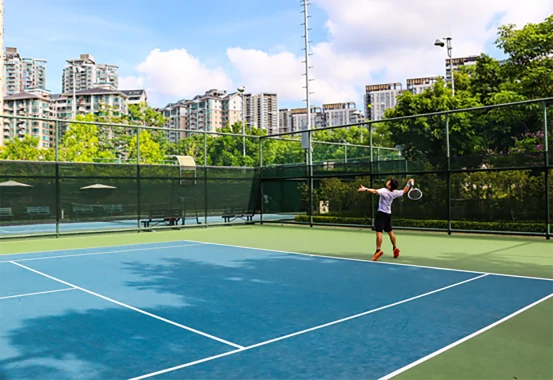

CE Certification for Paddle Courts Ensuring Quality and Safety
Paddle tennis, also known as padel, has surged in popularity globally over the past few years. This fast-paced racket sport combines elements of tennis and squash and is played in an enclosed court. As the demand for paddle courts increases, ensuring their quality and safety becomes paramount. One way to guarantee these standards is through CE certification, a crucial mark within the European Economic Area that indicates product compliance with safety and health requirements.
CE stands for Conformité Européenne, or European Conformity, and products bearing this mark comply with EU regulations. For paddle courts, CE certification applies to various components, including the court surface, lighting systems, fencing, and padding. This certification ensures that each aspect meets the necessary safety and performance standards, thus providing a safe environment for players.
CE Certification for Paddle Courts Ensuring Quality and Safety
One crucial aspect of CE certification is that it helps to standardize paddle court design and construction across different facilities. This standardization is vital for both players and facility operators as it assures a consistent level of quality. Athletes can expect the same playing conditions regardless of where they play, which enhances their experience and allows for fair competition. Furthermore, standardized courts can lead to more uniform strategies and styles of play as athletes become accustomed to similar environments.

Besides player safety, CE certification also protects facility operators. Courts that meet CE standards reduce the risk of accidents caused by equipment failure or inadequate construction. This compliance limits liability for court owners and operators, ensuring that they meet legal obligations related to safety and maintenance. Non-compliance, on the other hand, can result in severe consequences, including legal actions and financial penalties.
Additionally, CE certification can be a powerful marketing tool for paddle court facilities. By advertising that their courts meet these stringent standards, operators can attract more players and events. This competitive edge is increasingly important in the recreational sports industry, where quality and safety can significantly influence player choices. Facilities that prioritize safety and compliance can establish a reputation for excellence, thus driving more traffic and generating higher revenue.
Furthermore, as environmental awareness grows, the process of achieving CE certification encourages the use of sustainable and eco-friendly materials in construction. Manufacturers are increasingly choosing recyclable and less harmful substances that contribute to a healthier planet. Consequently, this not only benefits the players who use these courts but also aligns with the broader goals of sustainability in sports.
In conclusion, CE certification for paddle courts serves multiple critical purposes. It ensures the safety and quality of the playing environment, standardizes court design and construction, protects facility operators from liability issues, and enhances marketing efforts while promoting sustainability. As paddle tennis continues to expand its reach and popularity, the importance of CE certification will remain integral to ensuring that the sport maintains a high standard that prioritizes player safety and satisfaction. Embracing CE standards is not just a regulatory requirement; it is a commitment to quality that benefits the entire paddle community.
High-Performance Industrial Flooring Solutions China Paddle Tennis Court for Sale
High-Performance Industrial Flooring Solutions Durable & Cost-Effective
Homogeneous Transparent Floor – Durable & Stylish Rubber Floor Solutions
Premium Homogeneous Transparent Floor for Durable & Stylish Spaces Rubber Floor Solutions
Premium Sports Floor Solutions Durable PVC Sports Floor & Rubber Floor for Gyms
Durable Rubber Composite Floor Premium Rubber Floor & Mats Solutions